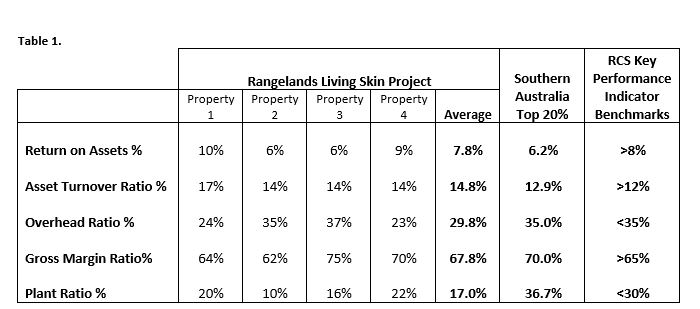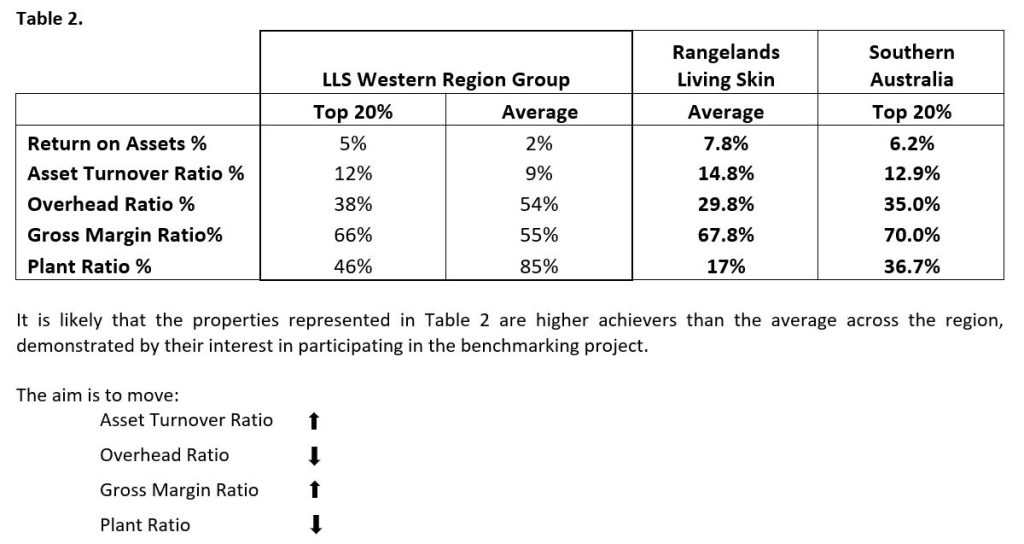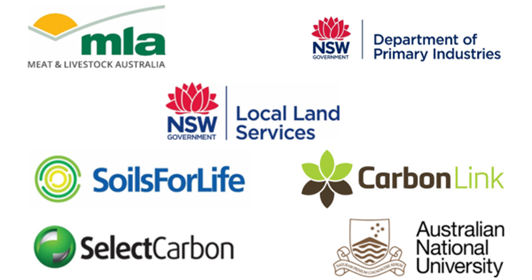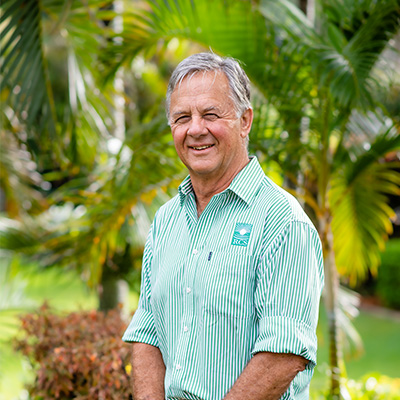
Dennis Donohoe, farm manager with Aminya Pastoral, is a seasoned producer with decades of experience, and his story is a testament to how even minor changes in farming practices can lead to significant improvements in productivity and land health.
There is a myth that if you move towards management practices that regenerate the land, you will affect your business profitability. The work being conducted by the Rangelands Living Skin project (a Meat & Livestock Australia funded project focusing within the Western Division of NSW) is helping demonstrate that this can be achieved without affecting business profitability.
The Rangelands Living Skin project is a four-year project linking farming families, scientists and other collaborators to evaluate cost-effective practices that focus on regenerating the NSW rangelands to support production now and into the future. This project runs from 2020 to 2024.
Resource Consulting Services (RCS) has clients that benchmark their businesses across the country and in a variety of enterprises. There is a common theme among those that are profitable; they identify profit over production.
Profitable businesses keep a tight control on costs; both Direct and Overhead costs. These businesses generally don’t buy inputs cheaper than you or I and they often don’t receive more $ per kilogram or tonne of produce. Their skill is in management. Timeliness of operations. They require less inputs because they plan their production cycles to work with the seasons. In the livestock industries, they don’t rely on supplementary feeding to facilitate out-of-season lambing or calving. In cropping, they plant in the appropriate window which reduces the need to prop up the system with chemicals and fertiliser. This principle applies across all landscapes.
As an integral part of the Rangelands Living Skin project, the four Core Producers in this project completed a budget for the 2022-23 financial year (Table 1). The common theme across these results was an outstanding set of numbers that would place these businesses in the top 20% of producers in the RCS benchmarking program ProfitProbe®, Southern Australia cohort.

The following is an explanation of the calculations of these comparison ratios:
Return on Assets = EBIT based on gross product / (Total closing assets – non-farm assets)
Asset Turnover Ratio = Total Gross Product / (Total Closing Assets – non-Farm Assets)
Overhead Ratio = (Total Overheads + Land Lease payments) / Total Gross Product
Gross Margin Ratio = Total Gross Product – (Direct Costs + Opportunity Cost) / Total Gross Product
Plant Ratio = Average of Opening and Closing value of Plant / Gross Product

In essence, these four core businesses in the Rangelands Living Skin Project turn off higher numbers of kilograms per head or tonnes of product created through higher weaning rates or weight gains. This results in increased Gross Product which has a positive impact on both Return on Assets and Asset Turnover Ratio.
Overhead and Gross Margin Ratios are impacted by costs. The aim is to reduce Overheads and increase Gross Margins. Gross Margin Ratio can be increased by reducing Direct Costs such as drench or chemical or optimising those costs in relation to production.. Apart from reducing Overhead costs, Overhead Ratio can also be reduced by increasing Turnover which dilutes Overheads over a greater number of kilograms or tonnes of product.
Plant Ratio isn’t something that is focused on normally in a ProfitProbe® interpretation, however in the Local Land Services Western Region Group the Plant Ratio is considerably higher than for any other benchmarking group. A high Plant Ratio generally indicates capital tied up in underutilised machinery.
The Returns on Assets forecast by the four properties in Table 1 demonstrate that grazing businesses in the Western Division of NSW are capable of achieving returns comparable to any region across the country. This is possible so long as they have clarity of purpose, are prepared be flexible in their thinking, match stocking rate to the carrying capacity of the country and manage their business as a business.
These profitable businesses can then turn their focus to building long term, resilient, hydrated landscapes that will have the capacity to hold water, resulting in less frequent droughts, floods and fires. The four Core Rangelands Living Skin producers are already some distance down this path.
To find out more details about the Rangelands Living Skin project, visit;
mla.com.au/research-and-development/Grazing-pasture-management/rangelands-living-skin/
The Rangelands Living Skin project is funded through MLA and RCS are proudly partnered with Department of Primary Industries NSW, Local Land Services NSW, Soils For Life, Meat and Livestock Australia, Carbon Link, Select Carbon and Australian National University to deliver this project in the Rangelands of NSW.

Author:

RCS Teacher, Advisor and Coach
Profitable Paddocks is our educational newsletter sent to your email inbox every quarter.
Click the Bell for the latest blogs.

Dennis Donohoe, farm manager with Aminya Pastoral, is a seasoned producer with decades of experience, and his story is a testament to how even minor changes in farming practices can lead to significant improvements in productivity and land health.
Once you have ownership as to why planning is important, the next ingredient is to work out where and how you will do your planning. When you write something down you change your relationship with the content. I cannot emphasise enough the power of getting your thoughts and plans out of your head onto paper or the computer.
The season in SA and Tassie is particularly tight right now with little or no useful rain since early January and a generally failed 2023 spring prior to that. Right now, across southern Australia and much of the eastern NSW, you won’t need to drive far out into the countryside to see cattle and sheep grazing (and lying on) hay and silage trails lined across paddocks.
Martha Lindstad and partner Robert James are farm managers on ‘Karalee’, Enngonia NSW. Both have travelled different paths to being where they are. Martha is originally from Norway, growing up on a three hectare farm before travelling to New Zealand and eventually the Pilbara in Western Australia. It was here that she saw the benefits of sustainable farming for the country and livestock.
The Prince’s RCS mentor, Raymond Stacey, sees a strong future ahead for Simon and Laura. “The Drought Resilient Soils and Landscapes project is about supporting graziers to manage their country and businesses better,” Raymond said. “I see an operation here where they’re working hard on their planning and putting their plans into action to leave their country, business and people in better shape.”

Join our mailing list
